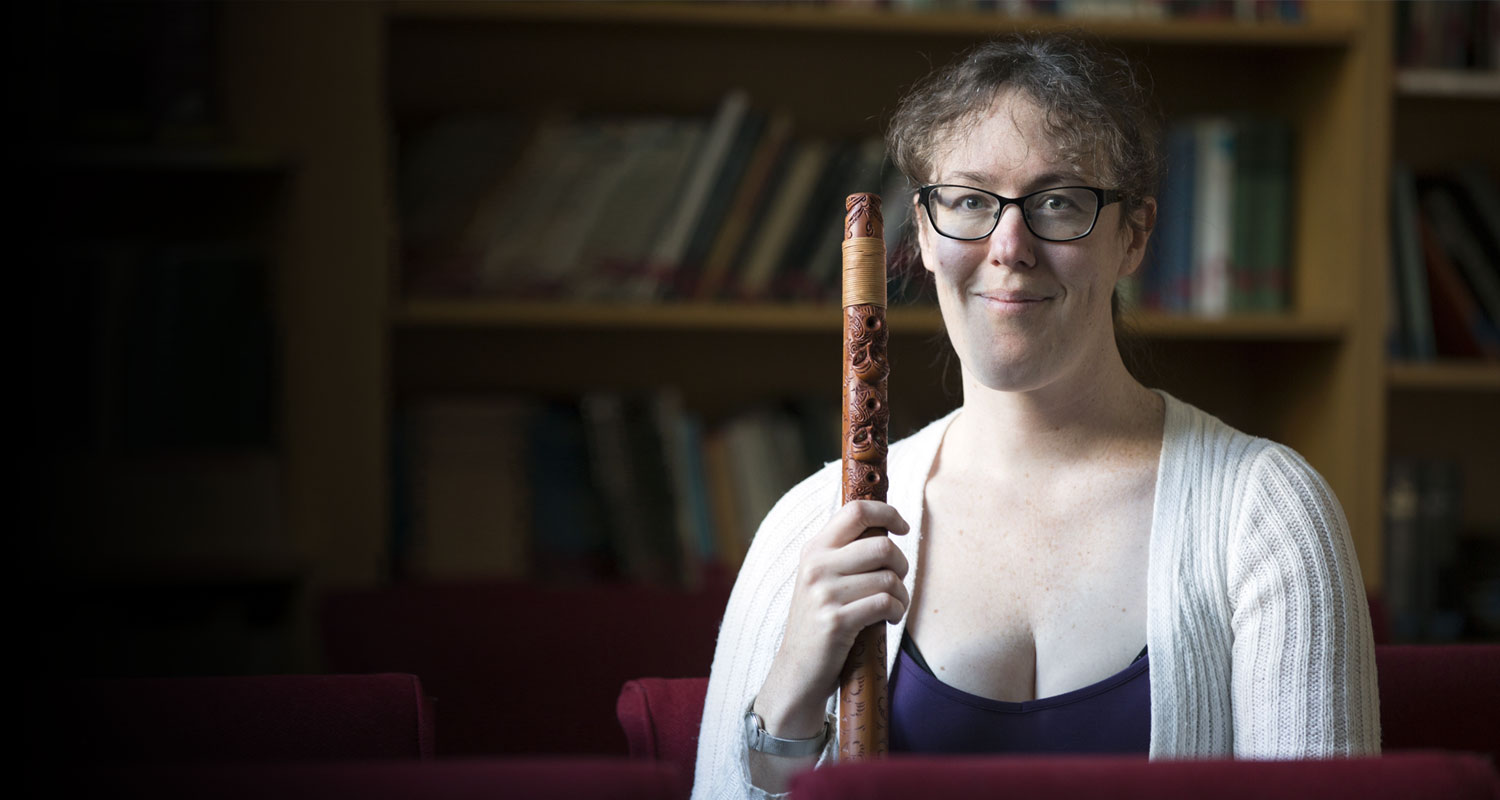
Sound research
Dr Jen Cattermole (Department of Music) is passionate about taonga pūoro – or traditional Māori musical instruments – and those of Moriori, and is keen to increase our knowledge of their origins and development.
Cattermole explains that she had an early interest in music, carving and indigenous culture, but was first exposed to taonga pūoro while studying music at the University of Otago.
“Seeing and hearing these instruments, I was absolutely swept away by the beauty of the sounds and caught up in some of the stories around how they relate to the land and the flora and fauna. I was hooked from that moment on.”
Cattermole is collaborating with Maui Solomon, from the Hokotehi Moriori Trust, and independent researchers Alistair Fraser and James Webster.
“We are interested in the musical knowledge and practices the direct ancestors of Māori brought with them to Aotearoa New Zealand from Polynesia,” Cattermole says, “and how they adapted to cultural changes and to new materials available in different locations.”
She says that the planned research includes taking CT scans of taonga pūoro held in the Otago Museum, to create digital 3D models and 3D prints of the instruments.
“We want to learn more about the natural materials used – wood, bone, stone, shell, gourd – how the instruments were made and what they sound like, because we are not allowed to play the ones in the museum.”
Cattermole has more than a theoretical interest in the subject: she is a competent player of various traditional Māori and Moriori wind, percussion and whirling instruments.